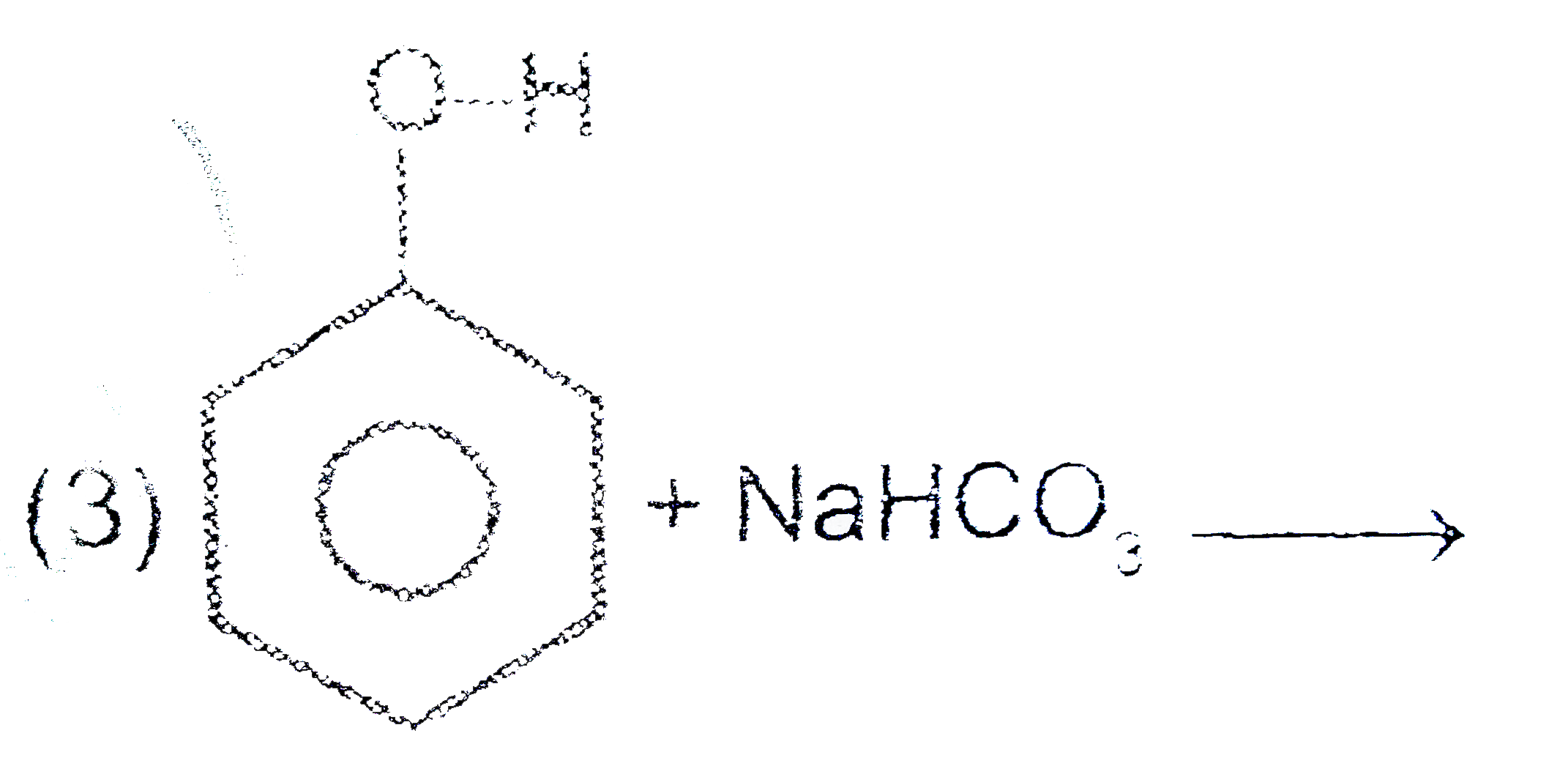(CH3)3CMgCl on reaction with D2O produces
(CH3)3CD
(CH3)3COD
(CD3)3CD
(CD3)3CD
The correct Answer is:A
To solve the problem of what (CH₃)₃CMgCl produces when it reacts with D₂O, we can follow these steps:
Step 1: Identify the Reactants
The reactants in this reaction are (CH₃)₃CMgCl (tert-butyl magnesium chloride) and D₂O (deuterated water).
Step 2: Understand the Mechanism
In this reaction, the carbon-magnesium bond in (CH₃)₃CMgCl is nucleophilic. The carbon atom bonded to magnesium has a strong tendency to donate its electron pair to a positively charged region, which in this case is the deuterium atom in D₂O.
Step 3: Reaction Process
1. The carbon atom in (CH₃)₃CMgCl donates its electron pair to a deuterium atom from D₂O.
2. This results in the formation of a new bond between the carbon and deuterium, creating (CH₃)₃C−D.
3. The remaining part of D₂O (which is OD) will combine with MgCl to form MgClOH.
Step 4: Write the Reaction
The overall reaction can be represented as:
\(
(CH₃)₃C MgCl + D₂O \rightarrow (CH₃)₃C-D + MgClOH
\)
Step 5: Identify the Products
From the reaction, we can see that the primary product is (CH₃)₃C−D, which is tert-butyl deuteride.
Final Answer
The product of the reaction (CH₃)₃CMgCl with D₂O is (CH₃)₃C−D.
---
The reactants in this reaction are (CH₃)₃CMgCl (tert-butyl magnesium chloride) and D₂O (deuterated water).
In this reaction, the carbon-magnesium bond in (CH₃)₃CMgCl is nucleophilic. The carbon atom bonded to magnesium has a strong tendency to donate its electron pair to a positively charged region, which in this case is the deuterium atom in D₂O.
1. The carbon atom in (CH₃)₃CMgCl donates its electron pair to a deuterium atom from D₂O.
2. This results in the formation of a new bond between the carbon and deuterium, creating (CH₃)₃C−D.
3. The remaining part of D₂O (which is OD) will combine with MgCl to form MgClOH.
The overall reaction can be represented as:
\(
(CH₃)₃C MgCl + D₂O \rightarrow (CH₃)₃C-D + MgClOH
\)
From the reaction, we can see that the primary product is (CH₃)₃C−D, which is tert-butyl deuteride.
The product of the reaction (CH₃)₃CMgCl with D₂O is (CH₃)₃C−D.
Topper's Solved these Questions
- HYDROCARBONSBOOK - AAKASH INSTITUTE ENGLISHCHAPTER - HYDROCARBONSEXERCISE - SECTION-C OBJECTIVE TYPE QUESTIONS (MORE THAN ONE OPTIONS ARE CORRECT)
12 Videos
- HYDROCARBONSBOOK - AAKASH INSTITUTE ENGLISHCHAPTER - HYDROCARBONSEXERCISE - SECTION-D LINKED COMPREHENSION TYPE QUESTIONS
7 Videos
- HYDROCARBONSBOOK - AAKASH INSTITUTE ENGLISHCHAPTER - HYDROCARBONSEXERCISE - ASSIGNMENT SECTION-A COMPETITION LEVEL DIFFER BY
50 Videos
- HALOALKANES AND HALOARENES BOOK - AAKASH INSTITUTE ENGLISHCHAPTER - HALOALKANES AND HALOARENES EXERCISE - ASSIGNMENT SECTION -D
15 Videos
- HYDROGENBOOK - AAKASH INSTITUTE ENGLISHCHAPTER - HYDROGENEXERCISE - ASSIGNMENT (SECTION - D) (Assertion-Reason Type question)
15 Videos
Similar Questions
Knowledge Check
Me3CMgCl on reaction with D2O produces :
AMe3CDBMe3CODC(CH3)3CDD(CH3)3COD
Me3C−MgCl on reaction with D2O produces :
View SolutionThe reaction of compounf P with CH3MgBr (excess) in (C2H5_(2)O followed by addition of H2O give Q the compound Q on treatment with H2SO4at 0∘ C gives R. the reaction of R with CH3COCl in the presence of anhydrous AlCl3inCH2Cl2 followed by treatment with H2O produces compound S. [Et in compound P is ethyl group] The product S is

View SolutionConsider the following reactions
I.
II.(CH3)2C∣OH−CH2−CHOΔ−−→
III. (CH3)2CHCH2−C∣FH−CH3CH3O−Na+−−−−−−−−−−→Δ
IV. (CH3)2CH−C∣BrH−CH3(CH3)3CO−k+−−−−−−−−−−→
Which of these reaction will not produce Hoffmann product?
View SolutionCaC2O4↓+CH3COOH→No reaction
View SolutionCaC2O4↓+CH3COOH→No reaction
View SolutionIn how many reactions CO2 gas is released out after reaction with NaHCO3
(1) CH3−O∣∣S∣∣O−O−H+NaHCO3→
(2) CH3−C∣∣O−O−H+NaHCO3→

CH3−CH2−OH+NaHCO3→
(5) CH3−C≡C−H+NaHCO3→
View SolutionOut of the following acid base-reactions, reaction (b) and (c) are possible.
a. PH3+⊕NH4→⊕PH4+NH3
b. NH3+P⊕H4→N⊕H4+PH3
c. (CH3)3P+⊕NH4→(CH3)3⊕PH+NH3
d. (CH3)3N+PH⊕4→(CH3)2⊕NH+PH3
View Solution
